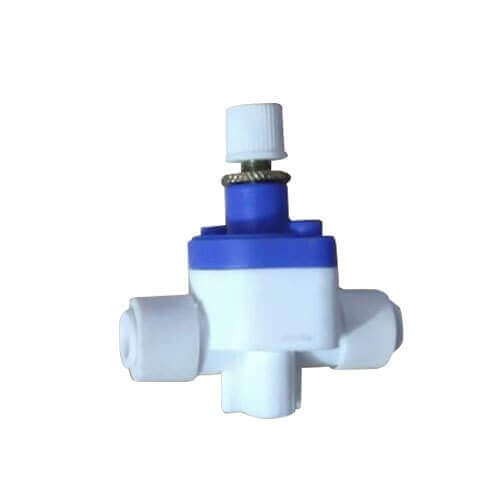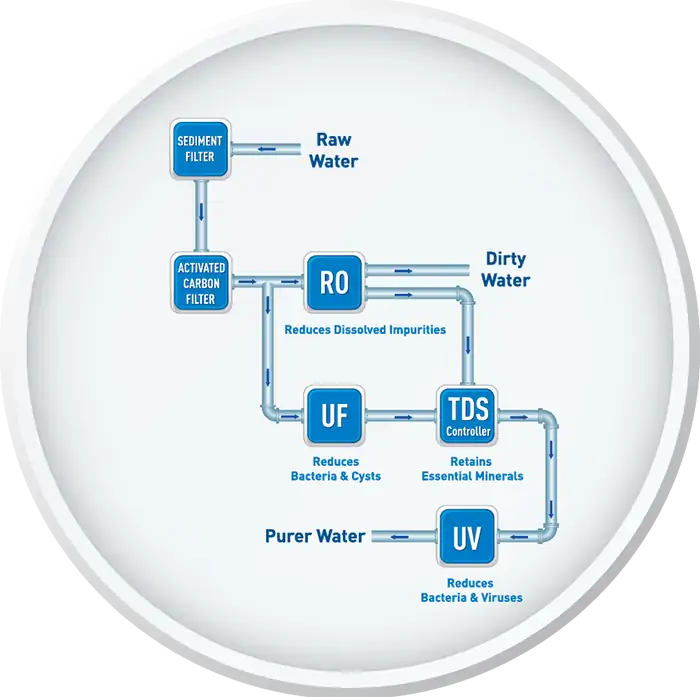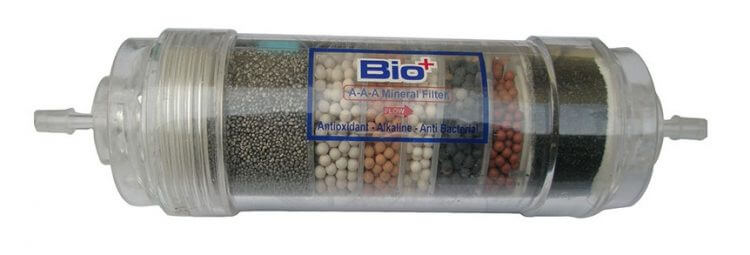One of the major issues with RO water purifiers is that they remove the essential minerals from water that is required for our body.
A RO water purifier basically removes all the TDS ( Totally Dissolve Solids), which means, RO Purifiers remove the essential minerals. That is why, water from RO water purifiers is often tasteless.
Now to get back that taste we need to either stop removing the good particles from the water or add them back at the end of the filtration.
That is where the TDS controller and Mineralizer come into the picture. The job of both techniques is to make your water more healthy and tasty but both work in different ways.
Let’s learn the difference between TDS Controller Vs Mineralizer here in this article.
What Is A TDS Controller?
Before we learn about a TDS controller, we need to know what exactly is TDS in water.
The full form of TDS is Totally Dissolved Solids. TDS is the amount of solids that are present in the water at any state. TDS can be dirty soil, viruses, bacteria, etc. or it can be healthy metals like calcium, magnesium, or mineral. So basically, anything can elevate the TDS in water if it gets dissolved in water.
What a typical RO does, is that it removes almost all the dissolved solids from water including the good ones which are not intended like minerals.
A TDS controller controls the amount of TDS that should be removed from the water so that it does not become tasteless and is good for our health too.
Although the TDS controller is a very low-cost device, it is found only in premium water purifier models.

How Does TDS Controller Work?
Let us look into the below diagram and understand how a TDS controller works.

As you can see from the above diagram the TDS controller gets the input water from the RO membrane as well as from the UF filter if it is an RO+UV+UF+TDS enabled water purifier.
In the case of RO+UV+TDS controller water purifiers, the TDS controller gets the water from the RO membrane and the activated carbon filter.
Now the question is why the TDS controller gets water input from two different sources.
The water that the TDS controller gets from the RO membrane is almost TDS-free. But the water that it gets from either the UF filter or the activated carbon filter has some amount of TDS.
What the TDS controller does is that it mixes water from both sources so that when we get the output water, it has some amount of TDS left.
But, don’t you feel that the water that the TDS controller is giving us may not be 100% purified?
The answer would be YES. TDS controllers can not give 100% purified water.
The reason is, that a TDS controller controls the TDS. But it can not differentiate between good TDS and bad TDS. So water coming out of the TDS controller may have bad elements too.
What is the alternative then?
The alternative is Mineralizer. Mineralizer solves the problem that a typical TDS controller creates.
What Is A Mineralizer Technology
A TDS Controller controls the TDS whereas a mineralizer adds minerals to water which is good for our health.
Unlike a TDS controller, a mineralizer does not control the TDS, but it adds the required amount of minerals. It takes the best possible purifier water from the RO and adds the essential minerals, chemicals, and metals into the water so that it becomes healthy and tasty.

In simple terms, fresh water enters the mineralizer at one end and leaves at the other end by adding the required minerals.
In technical terms, a mineralizer works on the principle of ionization and electrolysis. In the mineralizer, a low-voltage current always passes through. That does the electrolysis in the incoming water.
During the process the system releases positively charged ions live silver and copper. Both have antioxidant properties and can remove harmful particles.
When both the positively charged ions are released from the purification, it makes the water completely pure and safe to drink.
Now the question is, Can A Mineralizer Give 100% Pure Water?
The answer would be NO. No device can make water 100% pure. But it is assured that it can make your water at least 99% pure. That is still better than any RO water purifier that can only purify up to 90%.
TDS Controller Vs Mineralizer
Here is a head-on comparison between a TDS Controller and a Mineralizer.
| TDS Controller | Mineralizer |
|---|---|
| Water may not be 100% pure | Water is at least 99% pure |
| Chances of bad elements in the water | No chance of any harmful particles |
| It controls the TDS | It adds the required mineral, chemicals, and metals |
| TDS controller does not get 100% RO water | Mineralizer gets 100% RO water |
| It is just a mechanical device that controls the TDS | A chemical reaction occurs when water passes through the Mineralizer |
| A water purifier with a TDS controller is considerably cheaper | A water purifier with a mineralizer is very costly |
Mineralizer Vs TDS Controller. Which one to choose?
My call would be the mineralizer. It can make water almost 100% pure and tasty too. Whereas a TDS controller can not achieve both.
So, if you see that the input water TDS is very low and does not contain any harmful particles then you go ahead with a TDS controller.
But in case you are not sure how bad the input water is, it is always better to choose a mineralizer-based water purifier. After all, you should not take a chance on your health.